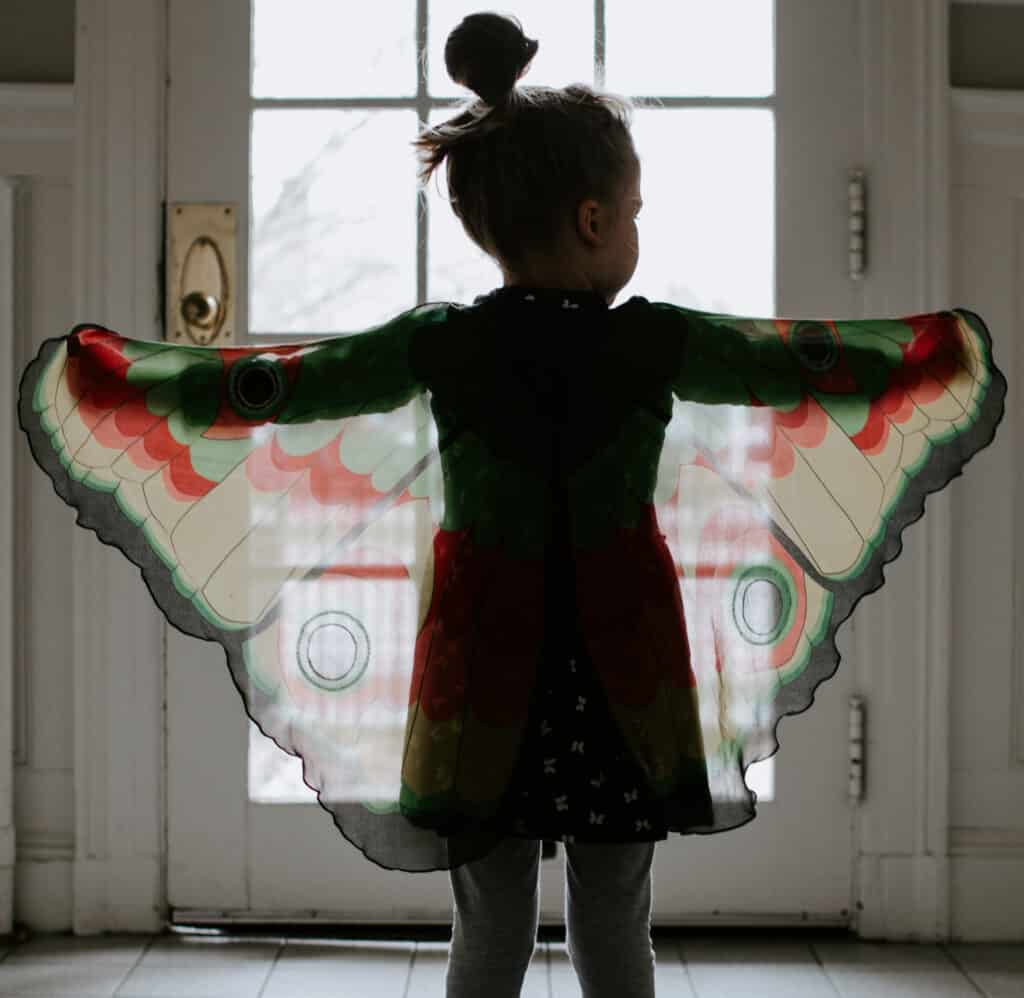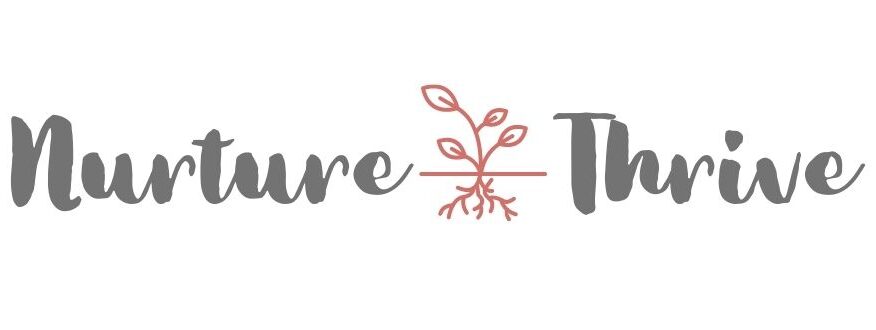Inside: 11 re-centering activities for kids to help them develop their inner strength and a sense of self. 8 Core energies for kids. Reduce stress and anxiety in kids.
There is one step that often gets lost in teaching kids how to regulate their emotions — what do you do after the emotional wave has come and gone? How do you re-center?
And for kids experiencing anxious thoughts and feelings which can be intrusive and persistent, re-centering or grounding oneself is a practice that when used often, can be very beneficial to reduce their distress.
To be able to re-center or ground oneself, you need something to center on — a core self. We don’t really think about teaching our kids about their core self, in fact, it is probably something we don’t think too often about ourselves.
But, whether we realize it or not, we are teaching them about their core self all of the time.

Stop and think for a moment about this. What messages are we giving our kids about their core self? Are we encouraging them to have a compassionate inner voice, to be curious, to be courageous?
Or are we equating their emotional reactions and their behavior to who they are as a person?
It is important to separate thoughts and feelings from who we are and from who our kids are. We are not our thoughts and feelings — they are part of us, but they are not our core self.
The Development of Self-Concept in Children: Building Inner Strength
It is especially important for kids to understand that they are more than their feelings and thoughts, because not only is their sense of self still under development, but also their ability to self-regulate thoughts and feelings.
Meta-cognition or the ability to think about thoughts, feelings, and your own mental state is something that develops along with the prefrontal cortex.
We see 4-year-olds better able to solve theory of mind tasks compared to 3-year-olds. And we see 6- year-olds start to be able to engage in self-monitoring, the ability to compare one’s skills to someone else’s. This ability to self-judge can bring with it insecurity and negative self-talk.
Related: How to Help Your Child Turn Negative Self-Talk into Self-Kindness
This awareness of the self is a kind of consciousness of being. Whether you call it awareness, meta-cognition, or consciousness, really it is an act of regulation. It is the part of us that does the regulating. It is the core self or self-energy. Or some would even say, the soul.
As parents, we should be paying as much attention to who our children are at their core level, to their souls, as we do to how they act and their behavior.
Not only should we be paying attention to it — we should be showing our children who they are — helping them to develop a strong sense of self.
Helping our children develop a healthy sense of self is a big part of growing up. Being able to separate thoughts and feelings from who you are underneath it all is a key part of mental wellness for life.
The Science: The Core Self and Self-Energy
If you have followed me for a while, you know that I often refer to emotions as energy. Emotions do provide us with energy and if we harness that energy well (i.e., regulate it) emotions can be quite helpful for us.
For example, frustration can help us work harder to accomplish something that is challenging. Like following through on a difficult project. Or studying harder for a challenging test. Or, for kids, trying again and again to build that tower of blocks.
However, when emotions overwhelm us or when the energy from our emotions is too big, we need to separate our core self from our thoughts and our reactions.
Our emotions and our thoughts are fleeting and ever-changing parts of us — but we are not simply the sum total our feelings. We are not simply our thoughts. Underneath all of those reactions is a core self, which is more than the sum of our parts– it is our self-energy.
Richard C. Schwartz, Ph.D. developed the Internal Family Systems model as a therapeutic model to help clients think about their core self. One of the things Dr. Schwartz noticed in his clients was that when they were experiencing growth or self-healing they were often drawing on their core self.
He defined the core self or the self-energy as having compassion, openness, and confidence. We know from other research that people who score high in these as personality traits are more likely to succeed in life and have higher well-being.
The 8 C’s: The Core Self or Self-Energy
Dr. Schwartz elaborated on the core self or energy as having eight main components known as the 8 Cs: Curiosity, Calmness, Clarity, Courage, Connectedness, Confidence, Creativity, and Compassion.
These are the traits we want to strengthen in our kids. The good news is, they already have all of these traits. We just need to help them to become aware of their strong inner strength, their core self, their self-energy.
Awareness of your Self-Energy does these things:
- Helps your child to respond instead of mindlessly reacting.
- Helps your child when they have an overwhelming feeling, like anxiety.
- Teaches your child that they are not the sum total of their thoughts or feelings, that they are more than the sum of their parts.
- Teaches your kids that there is always something to come back to when the waves of emotions calm down. Something to hold onto. A place to re-center to.
What gets in the way of a strong core-self?
1. Development. This is a very slow system to develop — perhaps so we as parents have a chance to help shape our children’s core strength and their inner strength.
2. Self-judgement. Right around the time the prefrontal cortex is maturing in childhood, between ages 5 to 7, the ability to see one’s abilities in comparison to others develops. Social comparison leads to self-judgment. The egocentric confidence of toddlers and preschoolers is gone and replaced with a new feeling to contend with: insecurity.
Note: We see a similar situation in adolescence, increased brain development, and with it, an increased ability of self-judgment.
3. Lack of awareness. Being able to name and recognize emotions is a huge first step to being able to regulate emotions. But, there is a missing step there. Being able to name, define, and recognize your core self is crucial as well.
Introducing the Core Self to Kids
Step One: You are Not Simply Your Feelings or Your Thoughts…
When your child is feeling overwhelmed with anxiety, stress, or other emotions the first step is always honoring that emotion, naming it, and sit with your child in that emotion. Here are 10 Emotion-Coaching Phrases to Use When Your Child is Upset.
One of the phrases I include in that article is, “How you feel right now won’t last forever. It’s okay to feel how you are feeling. It will pass and you will feel better again soon.”
It is important for children to know that emotions are temporary, they are not permanent.
But to your child, it can feel permanent. It can feel all-consuming. It can lead them to wonder, what is left when the feelings and thoughts are gone?
Once they have named their emotion, felt their emotion, and thanked their emotion it is time to tap into their self-energy.
Tell your child that emotions or thoughts are just one part of them. There is a core or central part of them that is strong, but just quiet right now. That is their self-energy.
Step Two: Tap Into My Self-Energy
Tell your child that there are 8 parts of their core self that are already inside them.
You can say something like this: “Okay, that emotional energy is gone and now we can come back to your self-energy. Your self-energy is made up of several core energies that are already inside you.”
I’ve adapted these from Dr. Scwarz’s original 8 to be more kid-friendly. Use the free printable coloring page to help introduce the 8 C’s to your child.
8 Core Self-Energies for Children
- Confident – I Believe that I can have an effect on my surroundings and that I can do hard things. I believe that I can learn and grow stronger from my mistakes.
- Curious – I am interested in the world around me and I have a sense of wonder about how things work and how other people feel and think.
- Calm – I cannot always control what happens around me, but I can choose how I respond. If I am upset, I know I can come back to a place of calmness.
- Courageous – I want to try new things and hard things, even if I sometimes feel a little scared. I know deep down I am a strong person.
- Creative – I have a strong imagination and I can come up with new ideas. I can think of ways to solve problems.
- Caring – I care about how other people feel. I like to help people and I like to be kind. Being kind and caring makes me feel good.
- Connected – I am connected to people who care about me and who I care about. I can show the people I care about my true colors, and who I really am inside.
- Clear-Headed – I can think through the steps to solve a problem. I have an open mind.
I have several exercises that help children get to know their own self-energy in my printable Yoga and Mindfulness Workbook for kids.
Step 3: Re-Center with Mindful Activities that Increase Your Self-Energy and Develop Inner Strength
Once you have introduced your child to their core energies, tell them that their core self is always inside them waiting to help them out and to help them feel better.
You can say something like: “You already have a lot of self-energy inside you. Sometimes it is a little hidden away, but it is always there. We can do things we like to do to help us get back to ourselves. To feel our self-energy strong inside of us.”
Here are some suggestions! Also, see a Sensory Scavenger Hunt to Help Kids Break The Cycle of Anxious Thoughts
See Also: 20 Yoga Books for Kids: Bring Peace, Joy, and Calmness into Your Day

 Is Your Child Having a Hard Time Falling Asleep? Five Ways to Reset Bedtime
Is Your Child Having a Hard Time Falling Asleep? Five Ways to Reset Bedtime